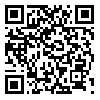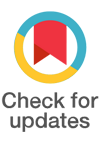Volume 14, Issue 4 (Jul & Aug 2024)
J Research Health 2024, 14(4): 297-298 |
Back to browse issues page
Ethics code: 123
Download citation:
BibTeX | RIS | EndNote | Medlars | ProCite | Reference Manager | RefWorks
Send citation to:



BibTeX | RIS | EndNote | Medlars | ProCite | Reference Manager | RefWorks
Send citation to:
Darabi F, Shaban S M. Examining the Necessity of Evaluating Life Skills in Health Education. J Research Health 2024; 14 (4) :297-298
URL: http://jrh.gmu.ac.ir/article-1-2473-en.html
URL: http://jrh.gmu.ac.ir/article-1-2473-en.html
1- Department of Public Health, Asadabad School of Medical Sciences, Asadabad, Iran.
2- Department of Educational Sciences, Faculty of Education, Istanbul Kültür University, Istanbul, Turkey. ,s.shabani@iku.edu.tr
2- Department of Educational Sciences, Faculty of Education, Istanbul Kültür University, Istanbul, Turkey. ,
Full-Text [PDF 325 kb]
(617 Downloads)
| Abstract (HTML) (3622 Views)
Full-Text: (747 Views)
Health education to society/target group/people starts with analyzing the gaps in the health problem. Then, after determining the behavioral and non-behavioral issues, behavioral issues are put on the agenda for education [1, 2]. In the health education model and health literacy approach, needs assessment and gap analysis are considered only in the field of a health problem, such as getting a disease or a disease risk factor, receiving care or preventive services, and or taking a specific medication [3]. Since health information and education sources are diverse at the societal level and the audience may have a specific tendency toward the use of a certain database, or they obtain the required health information from different sources as self-care, the focus is on their analysis, assurance of their validity, and sound application [4]. To achieve this goal, priority must be given to the needs assessment of timely life skills for assessing the need for health training and promoting health literacy in society. The ten life skills recommended by the World Health Organization (WHO), including self-awareness, empathy, good communication, interpersonal relationships, stress management, emotion management, problem-solving, decision-making, creative thinking, and critical thinking [5], are effective in promoting people’s health literacy.
Among these skills, the most important ones are self-awareness, coping, self-management (self-care), interpersonal relationships, communication, decision-making, critical thinking, and problem-solving because the application of health guidelines in all dimensions is profoundly influenced by the skill of problem-solving using the existing and sometimes contradictory information, critical assessment of available information, decision making for selecting correct information, personal skills in adaptation to a situation by patients for sound decision making, and above all, the enhancement of self-management in response to a question that whether the recommended methods are proper [6].
Therefore, when analyzing health education needs (determining the issue based on the burden of disease, ranking the issue, determining behavioral and non-behavioral causes of the issue, selecting and ranking the behavioral causes of the health problem, selecting the high-ranked behavioral problem, assessing knowledge, skill, attitude, behavior, and practice of the person regarding the high-ranked problem, and determining the educational need in these fields, and providing a program to solve the problem), it is necessary to evaluate life skills, whose effectiveness has been confirmed [7, 8] and measure knowledge, attitude, skill, and behavioral performance for a certain health problem [9].
References
Among these skills, the most important ones are self-awareness, coping, self-management (self-care), interpersonal relationships, communication, decision-making, critical thinking, and problem-solving because the application of health guidelines in all dimensions is profoundly influenced by the skill of problem-solving using the existing and sometimes contradictory information, critical assessment of available information, decision making for selecting correct information, personal skills in adaptation to a situation by patients for sound decision making, and above all, the enhancement of self-management in response to a question that whether the recommended methods are proper [6].
Therefore, when analyzing health education needs (determining the issue based on the burden of disease, ranking the issue, determining behavioral and non-behavioral causes of the issue, selecting and ranking the behavioral causes of the health problem, selecting the high-ranked behavioral problem, assessing knowledge, skill, attitude, behavior, and practice of the person regarding the high-ranked problem, and determining the educational need in these fields, and providing a program to solve the problem), it is necessary to evaluate life skills, whose effectiveness has been confirmed [7, 8] and measure knowledge, attitude, skill, and behavioral performance for a certain health problem [9].
References
- Kilduff A, McKeown K, Crowther A. Health needs assessment in primary care: The evolution of a practical public health approach. Public Health. 1998; 112(3):175-81. [DOI: 10.1038/sj.ph.1900454] [PMID]
- WHO. Health needs assessment of the adult population in Ukraine: Survey report September 2022. Geneva: WHO; 2023. [Link]
- Sørensen K, Levin-Zamir D, Duong TV, Okan O, Brasil VV, Nutbeam D. Building health literacy system capacity: A framework for health literate systems. Health Promot Int. 2021; 36(Supplement_1):i13-i23. [DOI:10.1093/heapro/daab153] [PMID]
- Sallam M. ChatGPT Utility in Healthcare Education, Research, and Practice: Systematic Review on the Promising Perspectives and Valid Concerns. Healthcare (Basel). 2023; 11(6):887. [DOI: 10.3390/healthcare11060887] [PMID]
- WHO. Life skills education for children and adolescents in schools. Geneva: World Health Organization; 1993. [Link]
- WHO. Life skills education school handbook: Prevention of noncommunicable diseases - Approaches for schools. Geneva: World Health Organization; 2020. [Link]
- Momeni S, Barak M, Kazemi R, Abolghasemi A, Babaei M, Ezati, F. Study of the effectiveness of social skills training on social and emotional competence among students with mathematics learning disorder. Creative Education. 2012; 3(8):1307-10. [DOI:10.4236/ce.2012.38191]
- Kazemi R, Momeni S, Abolghasemi A. The effectiveness of life skill training on self-esteem and communication skills of students with dyscalculia. Procedia-Social and Behavioral Sciences. 2014; 114:863-6. [DOI:10.1016/j.sbspro.2013.12.798]
- Melur Sukumar G, Banandur PS, Nagaraja SR, Shenoy AB, Shahane S, Shankar RG, et al. Youth focused life skills training and counselling services program-An inter-sectoral initiative in India: Program development and preliminary analysis of factors affecting life skills. PLoS One. 2023; 18(8):e0284771. [DOI:10.1371/journal.pone.0284771] [PMID]
Type of Study: Letter to Editor |
Subject:
● Health Education
Received: 2023/12/5 | Accepted: 2024/01/27 | Published: 2024/07/1
Received: 2023/12/5 | Accepted: 2024/01/27 | Published: 2024/07/1
| Rights and permissions | |
 |
This work is licensed under a Creative Commons Attribution-NonCommercial 4.0 International License. |









